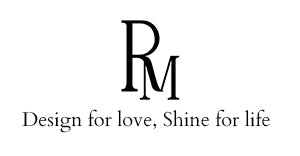Why Choose a Peridot Ring? Exploring Its Lush Beauty and Mystical Power
Peridot rings, with their vibrant green glow, capture the essence of summer meadows and ancient lore. Known as the "gem of the sun" by the Egyptians, peridot is more than a striking semi-precious stone—it’s a symbol of love, protection, and vitality. Whether you’re drawn to its lush hue or its reputed metaphysical properties, understanding who can wear peridot, its zodiac connections, potential side effects, and how to ensure authenticity is key to embracing its magic. This article answers seven essential questions to guide your journey with peridot rings, blending their spiritual significance with practical insights.
Can Peridot Be Worn by Anyone?
Peridot’s radiant energy makes it a versatile gemstone suitable for nearly anyone, regardless of birth month or zodiac sign. As the birthstone for August, it holds special meaning for those born in that month, but its benefits—promoting positivity, creativity, and emotional balance—extend universally. Unlike some gemstones tied to strict astrological rules, peridot’s gentle, uplifting nature welcomes all who resonate with its vibrant green hue. Whether set in a minimalist silver ring or a bold gold design, a peridot ring can be a meaningful addition to any jewelry collection, reflecting personal style and a connection to nature’s vitality.
Which Zodiac Can Wear Peridot?
Peridot is particularly aligned with the zodiac signs Leo and Virgo, as well as Gemini, Taurus, Libra, Capricorn, and Aquarius. For Leos, born in August, peridot enhances confidence, creativity, and leadership, amplifying their bold, sunny disposition. Virgos benefit from its grounding energy, which sharpens analytical skills and fosters emotional balance. Gemini natives find peridot boosts communication and focus, while Taurus ascendants connect with its earthy stability. Libras appreciate its harmonizing properties, Capricorns tap into its vitality for success, and Aquarians embrace its creative spark. Associated with Mercury, peridot enhances mental clarity and eloquence for all signs, though consulting a Vedic astrologer can ensure it aligns with your specific birth chart.
What Are the Side Effects of the Peridot Stone?
While peridot is celebrated for its positive effects, improper use or astrological misalignment may lead to mild side effects. If worn without consulting an astrologer, peridot might cause subtle emotional disturbances, such as restlessness or irritability, especially if it conflicts with your birth chart (e.g., when paired with opposing planetary stones like those for Jupiter). Physical discomfort, like headaches, could arise if the stone is synthetic or treated, diminishing its natural energy. To avoid these, ensure the peridot is natural, untreated, and worn according to Vedic guidelines (e.g., on the right hand’s little finger in silver on a Wednesday). Monitoring your energy after wearing it can help confirm its suitability.
How Do I Know If My Peridot Is Real?
Verifying the authenticity of a peridot ring is crucial to ensure its value and benefits. Here are key methods to check at home:
-
Color Inspection: Genuine peridot displays a vibrant, olive-green to yellowish-green hue with even color distribution. Look for natural variations; overly uniform or neon-green stones may be synthetic.
-
Inclusions: Under 10x magnification, natural peridot often shows “lily pad” inclusions (disk-like liquid-and-gas formations) around spinel or biotite crystals. Synthetic peridots may have air bubbles, indicating a glass-based composition.
-
Hardness Test: Peridot ranks 6.5–7 on the Mohs scale. It should scratch glass but may be scratched by quartz. Test cautiously to avoid damage.
-
Temperature: Natural peridot feels cool to the touch longer than glass or plastic imitations.
For certainty, consult a gemologist, as lookalikes like synthetic corundum or cubic zirconia can mimic peridot’s appearance.
What Is the Difference Between Natural and Synthetic Peridot?
Natural peridot forms deep in the Earth’s mantle, brought to the surface by volcanic activity, or in rare cases, meteorites. Its green color comes from iron in its magnesium iron silicate structure, with unique inclusions like lily pads. Found in places like Pakistan, Myanmar, and Arizona, natural peridot carries authentic vibrational energy prized in Vedic astrology. Synthetic peridot, grown in labs using melt techniques, mimics its chemical composition but often lacks natural inclusions, showing air bubbles instead. Synthetic stones have lower specific gravity and refractive index and may include chromium for enhanced color, which diminishes their metaphysical properties. Natural peridot is preferred for both jewelry and astrological benefits, while synthetics are cheaper but less effective for healing or spiritual purposes.
What Does a High-Quality Peridot Look Like?
A high-quality peridot ring showcases a vivid, bottle-green or pure green hue with strong color saturation, free from brown or dull overtones. The four Cs—color, cut, clarity, and carat—define its quality:
-
Color: The most valuable peridots are vibrant green with a hint of gold, evenly distributed, as seen in stones from Pakistan or Arizona.
-
Cut: Popular cuts like oval, cushion, or marquise maximize brilliance, reflecting light evenly without “windows” (transparent patches).
-
Clarity: High-quality peridot is transparent with minimal visible inclusions. Slight lily pad inclusions are acceptable, but cracks or cloudiness lower quality.
-
Carat: Stones between 3–7 carats are ideal for rings, balancing size and wearability.A high-quality peridot, often graded AAA or AAAA, appears luminous and clean, enhancing both its aesthetic and astrological potency.




